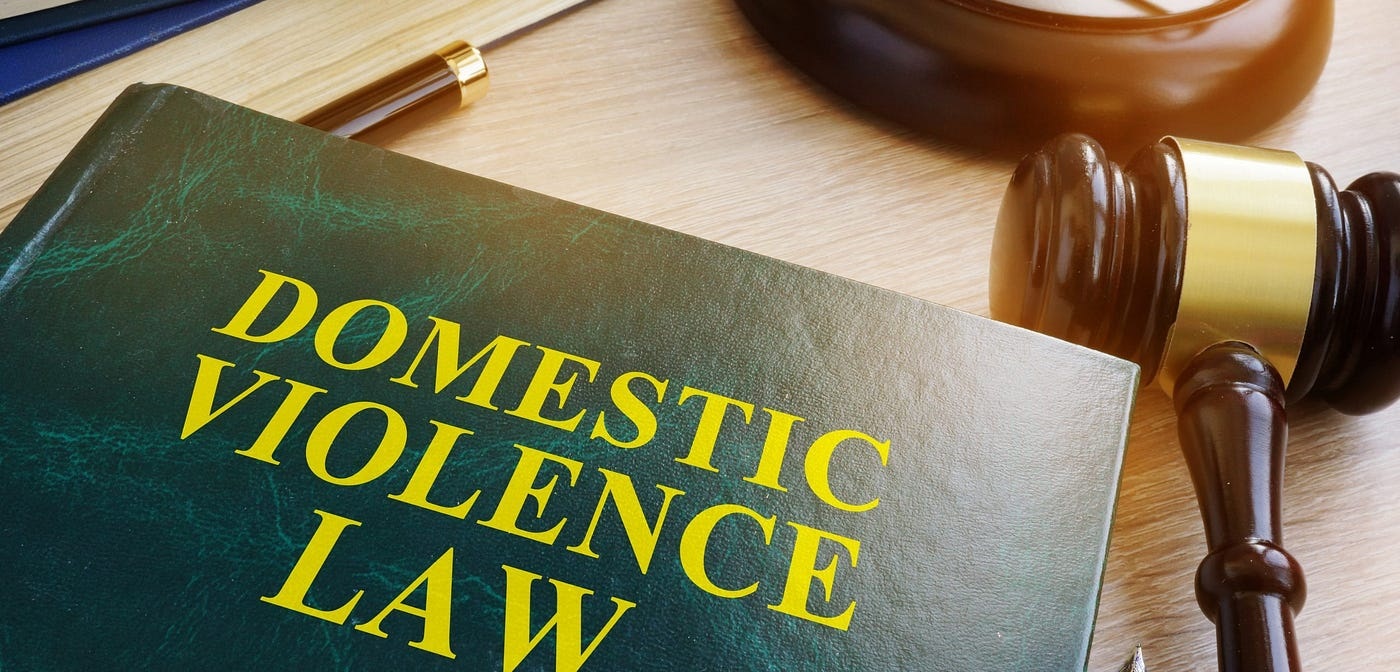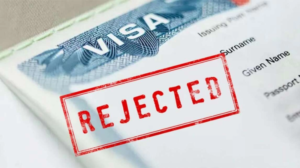
Understanding the Impact: Charged with Domestic Violence
Key Takeaways:
- Understanding the cycle of abuse is crucial in identifying and intervening in abusive relationships.
- Domestic violence encompasses various forms: physical, emotional, psychological, sexual, and financial.
- Recognizing the red flags of domestic violence can empower individuals to offer support and intervene.
- Understanding the laws regarding domestic violence helps survivors navigate the legal system.
- Law enforcement plays a vital role in responding to domestic violence cases.
- Advocacy organizations provide support and resources for survivors of domestic violence.
- Domestic violence has severe mental health consequences, including anxiety, depression, and PTSD.
- Therapy, support groups, and self-care practices are essential for survivors to overcome trauma.
- Various therapeutic approaches, such as CBT and EMDR, can aid in healing and recovery.
- Educational programs and intervention in high-risk situations are key in preventing and addressing domestic violence.
- Creating safe spaces for survivors promotes support and a sense of community.
The Dynamics of Domestic Violence
Domestic violence is a complex and pervasive issue that affects individuals and families around the world. It is essential to understand the dynamics of domestic violence to address and prevent it effectively. The cycle of abuse is one aspect of domestic violence that plays a significant role in perpetuating the cycle.
Understanding the Cycle of Abuse
The cycle of abuse is a pattern that many individuals in abusive relationships experience. It consists of four distinct phases: tension building, explosion, remorse, and honeymoon. The tension-building phase is characterized by increasing conflict, anger, and hostility in the relationship. This stage often involves verbal abuse, threats, and controlling behavior.
The explosion phase is the point at which the abuse becomes physical, sexual, or emotional. This is when the violence occurs, resulting in injuries, trauma, and fear for the victim. After the explosion, the abusive partner may show remorse and apologize, leading to the honeymoon phase. During this phase, the abuser may shower the victim with affection, gifts, and promises to change. However, this phase is temporary and often followed by the tension-building phase once again.
Understanding the cycle of abuse is crucial in identifying and intervening in abusive relationships. This knowledge helps professionals, such as law enforcement and support organizations, assist victims in breaking free from the cycle and accessing the help they need to heal and recover.
The Different Types of Domestic Violence
Domestic violence encompasses various forms of abuse, each leaving its own unique impact on the survivor. While physical abuse is perhaps the most well-known and visible form of domestic violence, it is essential to recognize that abuse can also be emotional, psychological, sexual, or financial in nature.
Emotional and psychological abuse involves tactics that undermine a person’s self-esteem, manipulate their emotions, and control their behavior. This can include constant criticism, humiliation, threats, and isolation from friends and family. Sexual abuse involves any non-consensual sexual activity or unwanted sexual advances. Financial abuse occurs when the abuser controls the victim’s finances, limiting their access to money and resources.
Recognizing the various types of domestic violence is vital in providing an understanding of those charged with domestic violence and comprehensive support for survivors. Each form of abuse has its own set of consequences and requires specific strategies for healing and recovery.
Recognizing the Red Flags
Identifying the warning signs and red flags of domestic violence can help individuals and communities intervene early and prevent further harm. While these signs may vary from relationship to relationship, there are some common indicators to watch out for.
One red flag is controlling behavior. Abusers often seek to control every aspect of their partner’s life, including their actions, friendships, and finances. Another warning sign is frequent jealousy and possessiveness. Abusers may display extreme jealousy, accusing their partner of infidelity without any evidence.
Other red flags include explosive anger, physical violence, or threats of violence. Abusers may also isolate their partner from friends and family, making it difficult for them to seek help or support. Additionally, verbal abuse and constant criticism can wear down a victim’s self-esteem over time.
Recognizing these red flags can empower individuals to intervene and offer support to those experiencing domestic violence. It is crucial to create a safe environment where survivors feel comfortable seeking help and speaking out about their experiences.
Legal Ramifications and Support Systems
Determining the Laws regarding Domestic Violence
The legal ramifications of domestic violence vary by jurisdiction, but there are general laws in place to protect survivors and hold perpetrators accountable. It is essential to be aware of these laws to navigate the legal system effectively.
One common legal provision is the issuance of protection orders or restraining orders. These court-issued documents restrict the abuser’s contact with the survivor and provide legal recourse if the abuser violates the order. Domestic violence is also a criminal offense in many jurisdictions, resulting in the arrest and prosecution of the perpetrator.
Understanding the laws regarding domestic violence helps survivors and advocates navigate the complexities of the legal system. It is essential to consult local resources or legal professionals for specific information on laws in a particular jurisdiction.
The Role of Law Enforcement
Law enforcement agencies play a vital role in responding to domestic violence cases. When a domestic violence incident is reported, it is crucial for the police to act swiftly and appropriately to protect the survivor and hold the perpetrator accountable.
Law enforcement officers are trained to recognize the signs of domestic violence and respond with empathy and sensitivity. They gather evidence, interview witnesses, and ensure the safety of all parties involved. Police officers may arrest the abuser if there is evidence of a crime being committed or if there is a reasonable belief that the survivor is in immediate danger.
It is essential for survivors to report domestic violence to law enforcement and provide as much detailed information as possible. This enables law enforcement agencies to effectively investigate and pursue legal action against the perpetrator, ensuring the safety of the survivor and providing them with the necessary support and resources.
Seeking Support from Advocacy Organizations
Advocacy organizations are a crucial source of support for survivors of domestic violence. These organizations provide a range of services, including shelter, counseling, legal assistance, and educational programs.
Shelters or safe houses provide a temporary safe space for survivors and their children, ensuring their physical well-being. Counseling and therapy services help survivors cope with trauma, heal from abuse, and regain their sense of self-worth. Legal assistance helps survivors navigate the legal system and access resources such as restraining orders or custody arrangements.
Educational programs offered by advocacy organizations aim to raise awareness about domestic violence and prevent future incidents. These programs often target schools, workplaces, and community organizations to provide education on healthy relationships, red flags, and available resources.
Seeking support from advocacy organizations can empower survivors to break free from abusive relationships, rebuild their lives, and educate others about the realities of domestic violence.
Addressing the Psychological Effects
The Impact of Domestic Violence on Mental Health
Domestic violence takes a severe toll on the mental health of survivors. The trauma and abuse experienced can lead to a range of psychological effects, such as anxiety, depression, post-traumatic stress disorder (PTSD), and suicidal ideation.
Anxiety is a common response to the constant fear and uncertainty that comes with living in an abusive relationship. Survivors may experience persistent worrying, restlessness, and panic attacks. Depression can result from the ongoing abuse, leading to feelings of sadness, hopelessness, and a loss of interest in previously enjoyed activities.
PTSD is a significant mental health consequence of domestic violence. Survivors may experience intrusive memories, nightmares, and flashbacks of the traumatic events. They may also develop hypervigilance, avoidance behaviors, and emotional numbness as a way to cope with the trauma.
Addressing the psychological effects of domestic violence requires a comprehensive approach that includes therapy, support groups, and medication, if necessary. It is essential for survivors to seek professional help to address their mental health needs and begin the healing process.
Helping Survivors Overcome Trauma
Overcoming the trauma of domestic violence is a long and challenging journey for survivors. It requires a supportive network, access to resources, and a commitment to healing and self-care.
Therapy and counseling are essential components of trauma recovery. Survivors can benefit from individual therapy to process their experiences, develop coping strategies, and rebuild their sense of self. Group therapy or support groups offer a community of individuals who have shared similar experiences, providing validation, understanding, and support.
Self-care practices, such as exercise, mindfulness, and creative outlets, can also aid in the healing process. Developing a strong support network of friends, family, and professionals is crucial for survivors to feel empowered and supported in their journey towards healing and recovery.
Exploring Therapeutic Approaches
Various therapeutic approaches can be effective in helping survivors of domestic violence heal and recover. One common approach is cognitive-behavioral therapy (CBT), which focuses on changing negative thought patterns and behaviors. CBT helps survivors challenge distorted beliefs about themselves and their relationships, develop healthier coping mechanisms, and set boundaries.
Eye Movement Desensitization and Reprocessing (EMDR) is another therapeutic approach used to treat trauma-related disorders such as PTSD. EMDR utilizes bilateral stimulation, such as eye movements or tapping, to help survivors process traumatic memories and reduce distressing symptoms.
Other therapeutic approaches that may be beneficial for survivors include art therapy, somatic experiencing, and dialectical behavior therapy (DBT). The choice of therapy depends on the individual’s needs and preferences, and it is important for survivors to work with qualified therapists who specialize in trauma and domestic violence.
Breaking the Cycle: Prevention and Intervention
Education and Awareness Programs
Prevention is key in breaking the cycle of domestic violence. Education and awareness programs play a crucial role in preventing abuse by promoting healthy relationships and empowering individuals to recognize and address domestic violence.
These programs can be implemented in schools, workplaces, and community organizations. They aim to educate individuals about the signs of domestic violence, healthy communication and conflict resolution skills, and available resources for survivors. By teaching young people about healthy relationships early on, we can lay the foundation for preventing domestic violence in future generations.
Intervening in High-Risk Situations
Intervening in high-risk situations is crucial to ensure the safety of survivors and potentially break the cycle of abuse. High-risk situations may include instances where there is a history of severe violence, escalation of threats, or access to firearms.
Law enforcement and support organizations can work together to create safety plans for survivors in high-risk situations. These plans may involve temporary relocation, obtaining protection orders, and developing strategies for self-protection. It is crucial for professionals to assess the level of risk accurately and provide support based on the unique circumstances and needs of each survivor.
Creating Safe Spaces for Survivors
Creating safe spaces for survivors is instrumental in offering support, resources, and a sense of community. Domestic violence shelters play a vital role in providing immediate safety and basic needs for survivors and their children. These shelters offer a secure and confidential environment where survivors can receive counseling, legal assistance, and support in rebuilding their lives.
Community organizations, faith-based groups, and support networks can also contribute to creating safe spaces for survivors. By fostering a culture of empathy, respect, and non-violence, we can create communities that support survivors and hold perpetrators accountable.
It is important for everyone to be aware of the signs of domestic violence and to actively promote a society where abuse is not tolerated. By working together, we can break the cycle of domestic violence and create a safer and more compassionate world for all.
FAQ
Question: What are the different types of domestic violence? – Domestic violence encompasses various forms of abuse, including physical, emotional, psychological, sexual, and financial abuse.
Question: How can I recognize the red flags of domestic violence? – Some common red flags of domestic violence include controlling behavior, frequent jealousy and possessiveness, explosive anger, physical violence or threats of violence, isolation from friends and family, and verbal abuse or constant criticism.
Question: What are the legal ramifications of domestic violence? – The laws regarding domestic violence vary by jurisdiction, but common legal provisions include the issuance of protection or restraining orders and criminal offenses that can result in arrest and prosecution of the perpetrator.
Question: How can law enforcement assist in domestic violence cases? – Law enforcement officers play a vital role in responding to domestic violence cases by providing immediate protection for the survivor, gathering evidence, and arresting the perpetrator if necessary. They are trained to recognize the signs of domestic violence and respond with empathy.
Question: Where can survivors of domestic violence seek support? – Advocacy organizations offer a range of services and support for survivors, including shelter, counseling, legal assistance, and educational programs. These organizations provide a safe space for survivors and help them navigate the healing and recovery process.
Question: What are the psychological effects of domestic violence? – Domestic violence can have severe mental health consequences, including anxiety, depression, post-traumatic stress disorder (PTSD), and suicidal ideation.
Question: How can survivors overcome the trauma of domestic violence? – Overcoming trauma requires a comprehensive approach that includes therapy, support groups, and self-care practices. Survivors can benefit from counseling, both individual and group, to process their experiences and develop healthy coping strategies. Building a supportive network is also crucial for their healing and recovery.
Question: What are some therapeutic approaches that can aid in healing from domestic violence? – Various therapeutic approaches, such as cognitive-behavioral therapy (CBT) and eye movement desensitization and reprocessing (EMDR), can be effective in helping survivors heal from trauma. The choice of therapy depends on the individual’s needs and preferences.
Useful Resources:


